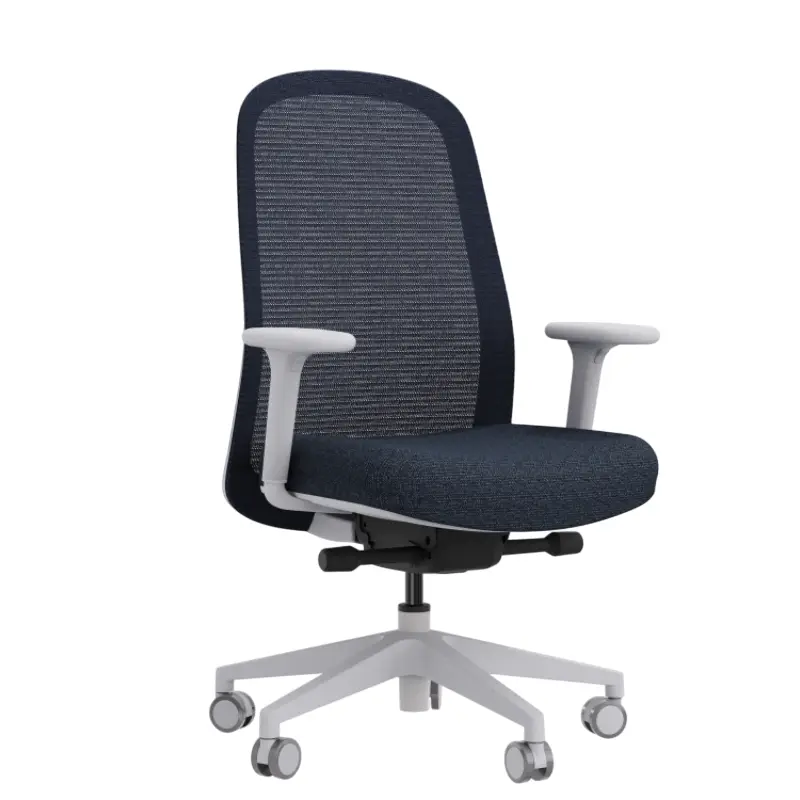Executive Leather Desk Chair vs Traditional Fabric Chairs
In today's dynamic work environment, investing in quality office furniture is not just a matter of aesthetics but a strategic decision that impacts productivity and employee satisfaction. Among the options available, executive leather desk chairs stand out for their luxurious feel and ergonomic support. However, they come with specific considerations and are often compared against traditional fabric chairs. Lets explore the nuances between these two popular choices.
The Durability of Executive Leather Desk Chairs
Executive leather desk chairs are renowned for their exceptional durability. Premium grain or vegetable-tanned leather is intricately crafted to withstand everyday use. Unlike fabric chairs, which can develop stains and fading over time, leather maintains its luster with proper care. However, due to the nature of leather, it demands more maintenance than fabric. Spot cleaning with a damp cloth or mild soap can help prevent stains, and applying water-resistant leather treatments can further enhance its longevity.

Ease of Maintenance for Leather Office Furniture
Maintaining leather office chairs is a bit more complex than keeping fabric chairs clean. Regular spot cleaning is essential, using a soft cloth and mild soap to gently clean the surface. Unlike fabric, leather does not need frequent vacuuming, but it should be protected from spills and deep stains with prompt cleaning. Fabric chairs, on the other hand, can be more straightforward to clean, requiring occasional vacuuming and routine cleaning with upholstery cleaners, making them a low-maintenance option for busy offices.
Cost Analysis: Leather vs. Fabric Chairs
Executive leather desk chairs often come with a higher initial cost due to the premium materials and craftsmanship involved. Although they require less frequent replacement, the upfront investment can be a significant factor. Fabric chairs, on the other hand, are more affordable but may need more frequent repairs and cleaning, leading to higher long-term costs. Additionally, the environmental impact of leather production and disposal is substantial. Fabric chairs made from renewable resources like cotton generally have a lower environmental footprint. However, the sustainability of both options varies, and choosing eco-friendly materials can help offset these negatives.
Ergonomic Features and Comfort of Executive Leather Desk Chairs
Executive leather chairs excel in ergonomics, offering features like adjustable arms, tilt mechanisms, and footrests. These features support optimal posture and reduce strain during long periods of sitting. Fabric chairs can also provide similar comfort but often require additional ergonomic accessories, which can increase their overall cost. Leather chairs built-in ergonomic features make them a premium choice for modern office environments where comfort and efficiency are paramount.
Environmental Impact and Sustainability of Leather Office Furniture
Leather production involves significant environmental challenges, including water usage for tanning and sustainable forest practices. Fabric chairs made from renewable resources like cotton generally have a lower environmental footprint. However, many fabric chairs end up in landfills, contributing to waste. While leather's production byproducts can pose disposal challenges, choosing leather from eco-certified sources and recycling options can mitigate some of these issues.
Factors to Consider When Choosing an Executive Leather Desk Chair
When selecting an executive leather desk chair, consider factors such as space constraints, ergonomic needs, and personal preferences. Executive leather chairs are ideal for environments where style and comfort are crucial. Fabric chairs offer greater versatility, fitting various spaces and personal preferences. Additional factors to consider include weight capacity and style options, which should guide your decision based on your specific needs and space requirements.
The Impact of Executive Leather Desk Chairs on Employee Well-Being and Work Culture
Executive leather desk chairs contribute significantly to a positive work environment by enhancing employee comfort and well-being. Their supportive design and modern aesthetics foster a sense of professionalism and dedication, boosting productivity and job satisfaction. Fabric chairs may need additional accessories to achieve the same level of comfort, potentially impacting the uniformity and overall atmosphere of the workplace. Comfortable seating can have a profound effect on employee morale and work culture, making leather chairs a valuable investment for companies aiming to create a productive and pleasant environment.
Conclusion
Ultimately, the choice between executive leather desk chairs and traditional fabric chairs depends on your specific needs and priorities. Leather offers timeless elegance and superior durability, while fabric provides versatility and affordability. By considering factors such as ergonomics, maintenance, and environmental impact, you can select a chair that aligns with your businesss values and enhances employee well-being. A comfortable, productive, and sustainable workplace environment is certainly worth the investment.





